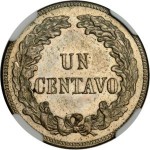Nicaragua changed my life. I learned about politics and poverty and conflict. I learned about the Cold War, and manual labour on a coffee plantation. Traveling into the country from San Salvador in 1986, our bus drove into a firefight between rebels and government troops. I heard rat-tat-tat and hit the floor. I remember thinking, “This is my first night in Central America.”
I was 22, just graduated from Carleton University with a degree in political science. My mother Marion was involved with a group Mayors For Peace and had met the mayor of Managua. My parents encouraged me to go there for six months to see the outside world.
In 1986 Nicaragua was live and hot, a focal point of the Cold War. The Somoza regime had collapsed after more than half a century of corruption. Everybody who supported the Sandinista revolution was there, a virtual Who’s Who of the left: Latino friends of Cuba, church groups, the Soviets. There were moments out of a John Le Carré novel; two other young aid workers and I were invited to a dinner with a Soviet “cultural attaché”. We declined.
A Canadian aid project was operating then, Tools For Peace, started by a coalition of churches and unions to help the country under U.S. trade embargo. I volunteered; we distributed Canadian aid, everything from hospital beds to classroom supplies. The civil war had destroyed roads, schools and clinics, and there was abject poverty.
I was idealistic and wanted to support the revolution any way I could. The agricultural union offered me work as a manual labourer at a Sandinista coffee co-operative near Matagalpa. Bags of coffee came down from the plantation; we’d spread it out on platforms and deliver it to the factory where the beans were graded. I thought I’d enjoy great coffee in Nicaragua but the best beans went for export; the workers drank what was left. I was paid a local wage and gave all my earnings to a local community fund.
On reflection I was extremely idealistic. I was a student. I saw Sandinistas promote schooling and health care. Cultural activities blossomed; I saw a crowd of workers and soldiers gather in an open-air theatre to hear Allen Ginsberg read poetry. And beautiful parts of the country once accessible only to the former regime were opened up to ordinary visitors.
I had fun, too. They play great baseball in Nicaragua. For a time I lived across from National Stadium in Managua. Massive crowds would gather in a blazing sun, drinking beer out of plastic bags. The key was to arrive early to find a shady spot. Managua had been razed by earthquakes and a portion of the stadium had begun to collapse, so they brought in a crane to hold up the structure. I’ll never forget those games.
Of course Nicaragua was not black and white. Newspapers were suppressed. Radio stations broadcast propaganda. There were security “walkabouts” in communities that could become overtly political and state-controlled. Sandinista President Daniel Ortega had pledged to govern as a populist reformer, to deliver his country from the vagaries of being a client state of the U.S. Today much of the lustre of the revolution has gone. The result is sad. Ortega remains in power, a classic model of the misguided leader convinced of his own indispensability.
Was I naïve? What was really achieved in Nicaragua? What would the country be but for all those years of conflict? They might have had a better chance at a modern economy and pluralistic society.
Yet I think of lessons I learned in Nicaragua in my everyday work. I lived amidst poverty and struggle, and learned how people survive when confronted with adversity. I learned politics is not theoretical; it is about real people and forgotten lives, and what occurs in conflict. My father Ken said I went to Nicaragua as a boy and came home a man.
(Editor’s note: the author is former New Democrat foreign affairs critic and three-term MP for Ottawa Centre)






